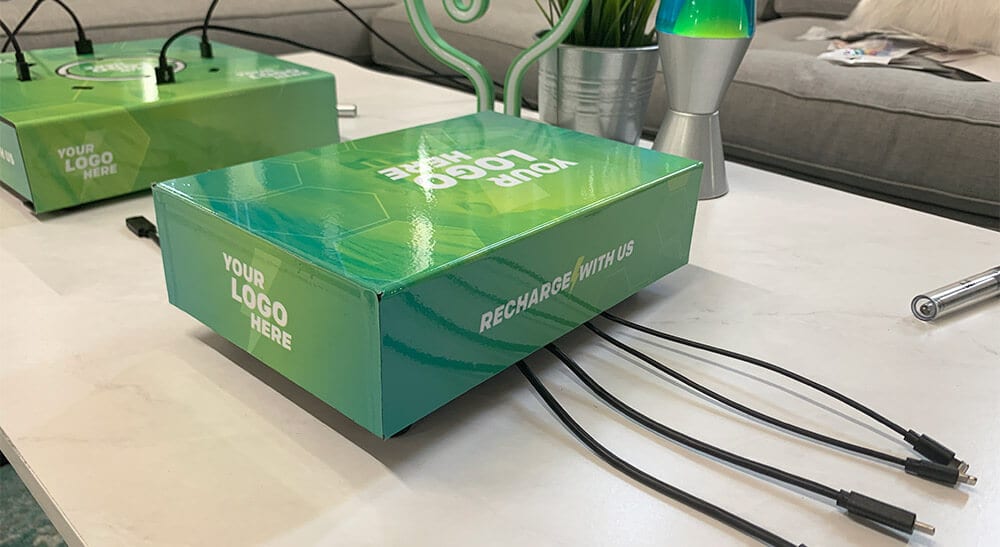Although today no one leaves their cell phones while heading out or sitting at their homes as they have become inseparable companions but the mobile phones that we know today have been around in the last 20 years. However, in the early days, they were used for calling people but soon after the texting features of cell phones were also introduced and nowadays they are used for handling most of our activities. From paying the bills to track, Smartphones today are used widely and that is not the only thing that is changed but with the increasing demands, the technology is growing rapidly with the continuous fall in the prices.
However, mobile phones were invented in the early 1940s and they were not mobile phones but the two-way radios that allow people to communicate merely in the emergency services.
The first-ever portable mobile phones (1983 – 1990)
In 1983, the first portable mobile phone came into use which was in the shape of Motorola DynaTAC 8000X and at that time it was the huge status symbol. In 1985, the first call was made through the portable cell phone in UK by Ernest Harrison, the chairman of Vodafone. In 1989 the Motorola followed the DynaTAC with 9800X or MicroTAC that has a fold-down keyboard cover.
Dawn of Consumer Handsets (1991 – 1994)
In 1991, GSM launched in Europe with the Orbitel TPU 900 but after that in 1992, they were restricted to business use, and the mass production paves the way for cost-effective consumer handset that has digital displays. During that time, Nokia took advantage of the transition with the release of Nokia 1011.
A splash of color (1995-1998)
The cell phones till 1995 were available in four colors, but in 1997 the Siemens S10 brought mobile phones with displays to life for the first time. During that time, GlobalHandy launched Hagenuk, which was the first device with our external aerial and also in the following year, Nokia launched the range of ‘Xpress-on’ that interchangeably covered 5100 series, making it the first cell phone that is fashion-oriented.
Growth of mobile features (1999 – 2000)
In 1999, Nokia 7110 was the first device that has taken advantage of WAP through which people can access information over a wireless network. After a year in 2000, the first cell phone with camera J-SH04 was launched and that was available only in Japan, where the people gained obsession for the phone photography. However, in 2002, Sony Ericsson T68i was launched with a clip-on camera that gains popularity in the western markets that then started to take interest in the cell phones with a camera.
The revolution of mobile data (2003 – 2006)
In March 2003, the 3G speed was implemented that enhanced the speed up to 2MBS which offered the first service in the UK. With the wide range of popular Blackberry devices, RIM then brought the mobile email to the masses and the front-facing camera came into existence in 2003. It was merely in the devices of Sony Ericsson Z1010 that made the video calling possible but it does not gain popularity.
Getting smarter (2007 – 2010)
The swiping and scrolling has replaced the traditional method of using buttons to input the data as in May 2007, Apple launched the iPhone that proved to be the stronger brand due to its touch screen. It was then the technology gets smarter and various other brands start developing cell phones with touch screens.
Life Companion (2011 – 2014)
With the development of technology, Smartphones gain huge popularity in modern life due to their advanced features that are more than just calling and communicating. In 2012, the first service of 4G charging was introduced in 11 cities that has enhanced the downloading speed up to 12mbps and taken it to the next level. It was then that voice recognition became common, and the Google voice has gained huge popularity and after that Apple Launched Siri into the market.
The Evolution of cell phone charging
Nowadays, people stay connected to their cell phones due to which the cell phone charging is essential to carry everywhere to keep cell phones charged.
The mobile chargers in 1980s – The mobile chargers in the 1980s were used to power the Motorola DynaTAC that takes about 10 hours to charge the cell phone batteries of these cell phones and these batteries do not hold the charge constantly.
Compact phone charger – These were perfect for the cell phones that have nickel-cadmium batteries but there charging time was reduced to 4 – 5 hours, which was then considered a breakthrough in mobile charging.
Classic wall chargers – It is the typical charger that is available with today’s cell phones and they are used for the Li-ion batteries, and they can be connected with the integrated cable that is available with the USB cables. These chargers are the perfect way to charge cell phones due to their fast charging as they take only an hour or two for cell phone charging.
USB cable chargers – These are the chargers that take 3 or 4 hours to charge cell phones, depending on the amperage you choose as these chargers also have the data transfer capabilities that add to their versatility. The only drawback of these charging stations is that when these are connected to the computers instead of a power charger, the charging time decreases and becomes slower than the traditional chargers.
Portable power bank – These chargers fulfill the needs of the customers wherever they go, by providing them the charge on time as these can recharge the cell phones in 3 hours and most of them have a built-in USB charger. You have an option to choose the best that fits your needs as these are available in high-capacity or a low-ranked portable power bank.
Wireless charger – Wireless chargers provide you the hassle-free charging as these help you to get rid of the charging cables and excess plugs that prevent the wear and tear of the power cords. Wireless chargers replenish the charge on your cell phones in 2 hours and the perfect option that you can carry around to charge your low cell phone batteries.
Solar power chargers – These chargers are powered by sunlight as you only need to keep them in the direct sunlight to use them for cell phone charging. These are the most efficient ways to keep your cell phone charged and save you from unnecessary chaos of electricity issues.
Car Chargers – Smartphone car chargers are available in different designs depending on the model of the cars and are the most efficient solution for those who forget to charge their cell phones in a rush. These are various car models that have the USB ports and you can use them for charging your cell phones as these help you to charge your cell phones effectively.
Charging kiosks – Cell phone charging stations are typically found in the terminals of public transport, convenience stores, coffee shops, and gasoline stations, and are available with various charging cables to charge multiple devices. However, you can use them for the events or festivals, but make sure to choose the most suitable can charge various devices from Apple to Android in minimum time.
- Flex – These phone charging stations are everyone’s favorite due to their easy setup and branding as these are the perfect solution for those who need last-minute charge or has a hidden USB port. These cell phone charging stations can charge various devices from Apple to Android as these are available with 12 charging tips and a hidden USB port.
- PowerMethod – These charging stations are lightweight and free-standing that takes only a few minutes to assemble and strike that can charge multiple devices from Apple to Android. The PowerMethod cell phone charging stations can charge various devices simultaneously as these are available with 10 USB cables. If you are looking for better event engagement then these are a great way that you can choose to attract the attention of audiences and providing them a reliable charge.
- InBox – These are the perfect option for those who want the fastest and most efficient cell phone capabilities and the perfect way to keep people engaged for a longer period while charging their cell phones. With these charging stations, you can turn any space into the cell phone charging station as you only have to assemble them properly for better results. If you are looking for the solution to host the event with a limited budget but want to make your attendees engaged then these are the most reliable choice that you can choose.
Phone Charging Station
- PowerBox – These are the great way when you want to show your brand effectively and are the more reliable solution for the multi-day events. These are the compact tabletop wireless chargers that are battery-powered that stays charged for more than 10 hours. PowerBox chargers can be placed on any of the surface as these are the perfect option for those who want the fastest and most efficient cell phone charge.
- 6 Chamber lockers – These charging stations provide charge as well as some peace of mind to charge the cell phones as they provide you the valuable data and a safe place for the attendees to recharge their cell phones. These charging stations come with 3 cables in each chamber that can charge various devices from Apple to Android and everything in between. If you want to maximize the branding then these charging stations are a great way to do so due to their graphic panel that is the most effective way to catch the attention of the attendees.
- Glass Power tables – Your event needs tables as these look stylish and most of the attendees prefer to stand nearby table, but if these tables become the source of charging then no one will leave your events. If you are looking for the most suitable solution to enhance the engagement of the attendees then the glass tables with cell phone charging features are a great way that you can prefer. Furthermore, these are available with 12 charging ports that make them an ideal choice for charging various cell phones from Apple to Android and these are comfortable for both standing and sitting that you can incorporate in your venues.


